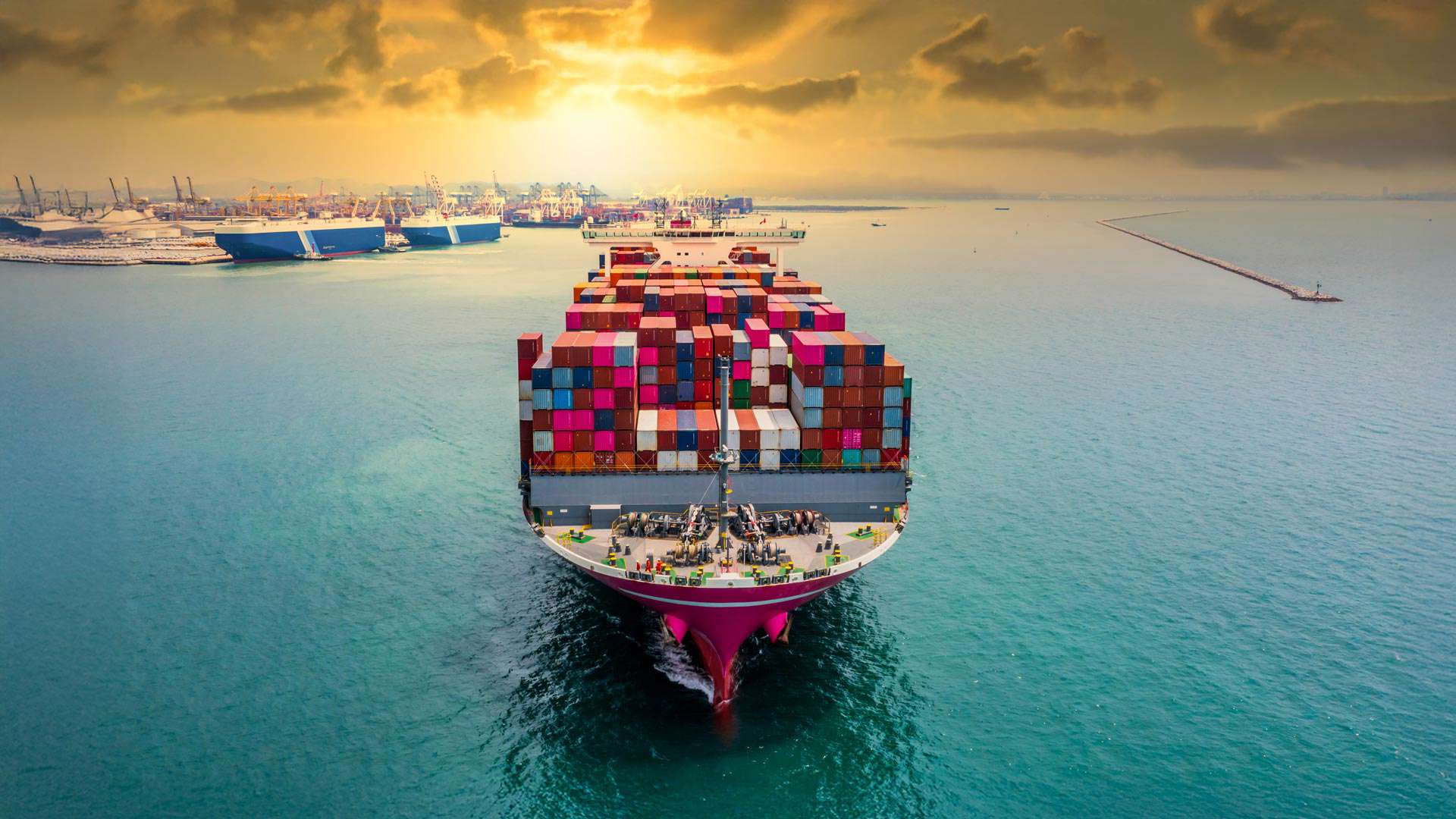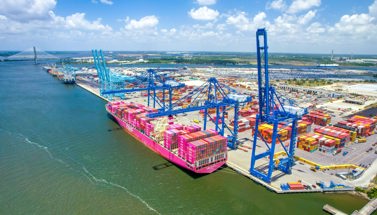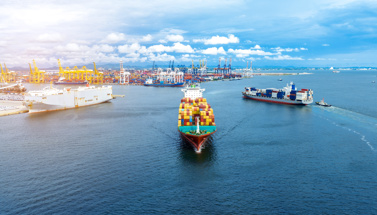
Top Caribbean Ports for Global Shipping and International Trade
Nestled between major global trade lanes and equipped with deep harbors, the Caribbean is more than a postcard paradise: it’s a powerhouse of global shipping. As supply chains shift and nearshoring gains momentum, the region’s ports are emerging as critical gateways linking the Americas, Europe, and Asia.
The Caribbean region is packed with opportunity, starting with a GDP estimated at more than $151 billion, according to the International Monetary Fund (IMF). With proximity to the Panama Canal and strategic positioning along major trade lanes, Caribbean ports provide clear transshipment advantages.
For any shipper doing business in the Caribbean or passing through the islands, knowledge of the biggest and best ports in the region is a must. Here are the top seven ports by volume of cargo today.
1. Kingston, Jamaica
The Port of Kingston was recently ranked as one of the world’s top 100 ports. Its location at the intersection of north-south and east-west shipping lanes as well as its world-class infrastructure, have set the Port of Kingston up for success.
Approximately 2 million TEUs (twenty-foot equivalent units) pass through the port each year. Much of the cargo arrives on the world’s largest Panamax vessels that take advantage of Kingston’s deep harbor and ample number of berths.
Enviable infrastructure in the port ranges from Panamax gantry cranes and on-dock container freight stations to customs bonded warehouses and cold storage. A 30-year investment agreement, started in 2016, will pump $400 million into ongoing port improvements.
Kingston is one of the region’s leading transshipment ports for goods being moved between Asia and Latin America, North America and the Caribbean, and Europe and South America. The port is also a logistics and distribution hub for cargo moving among Caribbean islands.
Mineral exports that power the Jamaican economy also pass through the port, including alumina and bauxite which are processed on the island for the world market. The port also handles agricultural products, rum, and manufactured goods from Jamaica’s light manufacturing and assembly industry for regional export.
2. Caucedo, Dominican Republic
The Port of Caucedo is a major transshipment hub in the Caribbean and a crucial conduit for exports created by the Dominican Republic’s well-established manufacturing base.
Caucedo’s annual throughput is 1.4 million TEUs. This port is favored for its infrastructure facilitating transshipment and gateway services between the Americas, Europe and Asia.
In addition to harbor depths that accommodate the largest Panamax liners, the Port of Caucedo features Panamax gantry cranes, expansive lengths of berth, and excellent yard space with ample reefer plugs for temperature-controlled cargo.
The port announced major plans to invest in infrastructure that will further transshipment capabilities by boosting berth capacity, adding equipment, and expanding free-trade zones (FTZs).
Exports from this port reflect the Dominican Republic’s leading manufacturing activities. The DR is known for its highly skilled workforce and advanced manufacturing facilities. Key products exported through this hub include medical devices and equipment .
The port plays a critical role in receiving imported consumer goods and appliances residents in DR rely on. Other imports like equipment, fuel, and raw materials are essential to support the island’s industrial base.
3. San Juan, Puerto Rico
Puerto Rico is usually a top contender whenever near-shoring is considered—and for good reason. It has an existing industrial infrastructure, workforce trained to high manufacturing standards, and close connections to the U.S.
The Port of San Juan is the prime conduit for the island with 1.3 million TEUs passed through Puerto Nuevo, the commercial end of the port, in 2023.
The port is a vital link for containerized cargo, fuel, consumer goods, and cruise tourism. Cargo coming into San Juan sustains the island and drives local industry.
Port logistics are supported by strong connections to inland highways for inter-island distribution. San Juan’s logistics capabilities include strong support zones with ample warehousing for distribution services.
Inbound shipments from the U.S. far outweigh outbound shipments. Puerto Rico relies heavily on mainland shipments of consumer goods, fuel and petroleum products, construction materials, and machinery.
Outbound shipments through San Juan are primarily pharmaceuticals and other high-value goods manufactured in Puerto Rico like electrical equipment, computers, rum, coffee, and some textiles. These shipments benefit from San Juan’s strong links to U.S. ports that have well-established sailings and facilities in place for receiving Puerto Rican shipments.
4. Freeport, Bahamas
The Port of Freeport provides unique opportunities for shippers seeking transshipment opportunities outside the U.S. Being just 65 miles from Florida, Freeport stands out among the Caribbean ports for its nearness to America.
Approximately 1.2 million TEUs pass through the port every year supported by a natural deep harbor which accommodates the largest Panamax vessels. Volume is kept moving with the help of Panamax Gantry Cranes and other infrastructure that the world’s largest steamship lines require.
Freeport is a major transshipment hub. Large companies have made it their gateway for cargo transshipped throughout the Caribbean as well as Central and South America.
Oil is a key commodity transshipped through Freeport. It gets imported as crude and exported as refined petroleum products. The Buckeye Bahamas Hub is one of the largest oil storage hubs in the Western Hemisphere.
Many other forms of cargo are transshipped through Freeport. Much of the volume is supported by sizable Foreign Trade Zone (FTZ) capacity and a 230-acre logistics and industrial park that facilitates value-added services and light manufacturing. Pharmaceuticals and medical supplies produced in Freeport’s industrial zone lead the list of transshipped exports.
Aside from oil, Freeport’s imports are primarily products that support daily life in the Bahamas and other Caribbean nations. Many products shipped from Asia and Europe are unloaded at Freeport and then distributed by smaller vessels throughout the Caribbean. They include fresh food, packaged goods, electronics, furniture, apparel and household items. Construction materials, cars, and car parts goods also pass through the port.
5. Rio Haina, Dominican Republic
The Port of Rio Haina, also in the Dominican Republic, is distinguished from the Port of Caucedo by its focus on cargo for domestic use.
The Port of Rio Haina processes 485,000 TEUs a year and is the busiest of three ports handling cargo for metropolitan Santo Domingo. Much of the cargo that is destined for domestic use on the island passes through the Port of Rio Haina. The port is close to the capital as well as industrial zones, warehouses, and manufacturing hubs in the capital region.
Rio Haina is a multipurpose port that plays a critical role in processing the island’s general cargo, bulk, fuel, and industrial materials.
6. Port of Spain, Trinidad & Tobago
The Port of Spain is Trinidad & Tobago’s main multipurpose port. The port which processes 228,000 TEUs of cargo a year is the main entry point of goods and materials for one of the 10 Richest Countries in North America. Trinidad & Tobago’s offshore oil and natural gas reserves power its export economy.
Primarily a container and breakbulk port, the Port of Spain is the main port of entry for imports of food cargoes as well as other necessities including construction materials, industrial equipment, and consumer goods. Nearly all of Trinidad and Tobago’s imports come from major trade partners that include the United States, China, Brazil, UK, and CARICOM member states.
Port of Spain is also an essential distribution hub for regional shipments to Barbados, Grenada, St. Vincent, Antigua, and others via small feeder vessels and inter-island shipping lines.
This port supports some exports of goods manufactured on the island such as plastics, packaging materials, furniture, and building supplies. Other exports include consumer products like locally produced foods, beverages, and rum. Scrap metals and other items like batteries and plastics for recycling are also exported.
Strong Ports Make the Caribbean a Paradise for Near-Shoring
The Caribbean’s ports are ready for their next chapter in global trade. World-class infrastructure, skilled workforces and continuous investment have these Caribbean ports poised for supporting the near-shoring strategies of today and the future.
The trade lanes and routing options offered by the world’s largest steamship lines can be complex. Partnering with an experienced freight forwarder is key to streamlining your supply chain and supporting efficient operations for your business.
The team at Trailer Bridge International stands ready to help you navigate the changes in steamship alliances and find a routing that supports your end customer.
Related Articles





